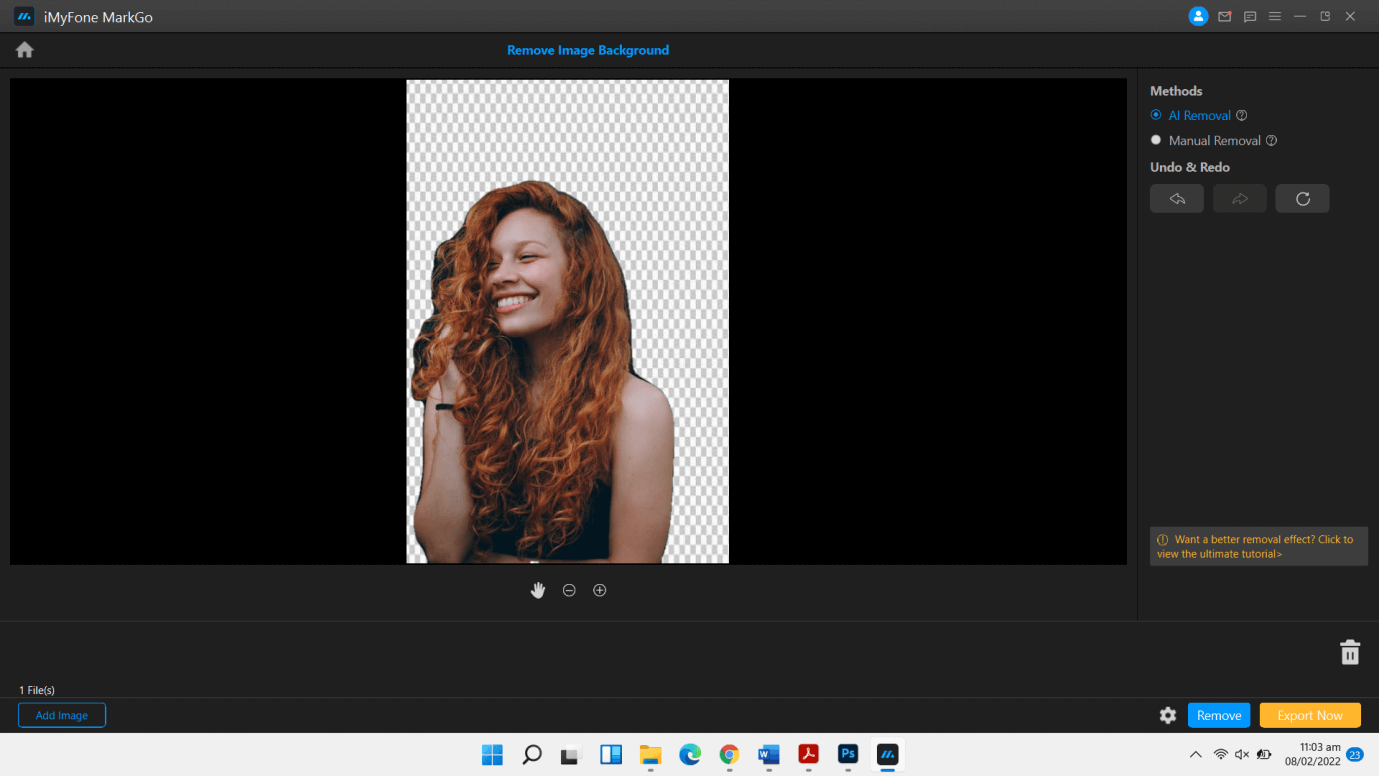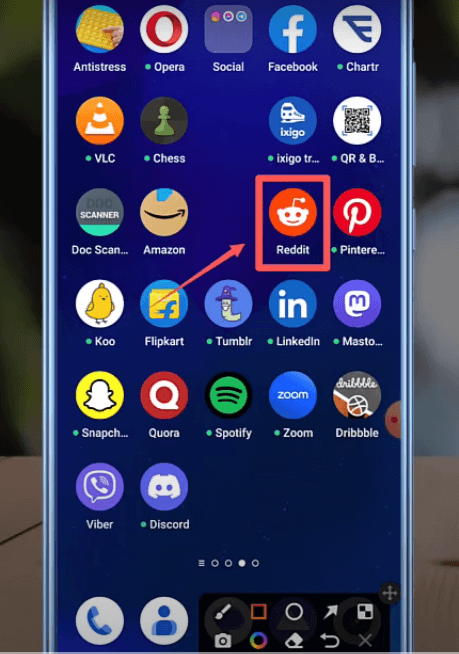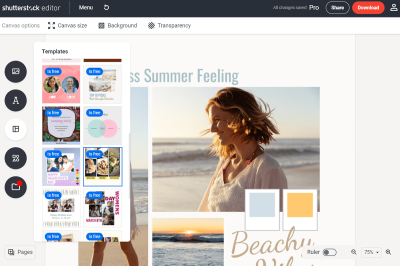If you’ve ever downloaded an image from Shutterstock and then noticed their logo slapped right across the picture, you might have wondered if there’s a way to get rid of it. Whether you’re looking to use the image for a professional project or just want a cleaner look, understanding how to remove that pesky logo can be a game-changer. While Shutterstock‘s logo is there for branding and copyright reasons, some users on Reddit have shared tips and tricks to help you remove or minimize it—sometimes legally, sometimes through creative editing. In this post, we’ll explore these methods and the policies behind logo usage to help you make informed choices.
Understanding Shutterstock’s Logo Usage Policies

Before diving into methods to remove the Shutterstock logo, it’s crucial to understand what Shutterstock‘s policies say about logo usage.
Shutterstock‘s logo or watermark is intentionally placed on images to protect the copyright and prevent unauthorized use. Removing or altering the watermark without proper licensing can be considered copyright infringement, which is illegal and can lead to legal consequences. Therefore, if you want a clean, logo-free version of an image, the right approach is to purchase the appropriate license that grants you the rights to use the image without the watermark or logo.
However, some Reddit users have shared tips on how to legally obtain images without the Shutterstock logo. These include:
- Buying an Extended License: Some images are available with an extended license that allows for more flexibility, including removing watermarks or logos for specific uses.
- Using Shutterstock’s Download Options: When you purchase and download an image correctly, Shutterstock provides a high-resolution, watermark-free version for your authorized use.
- Contacting Shutterstock Support: If you’re working on a special project, reaching out to Shutterstock support might help clarify licensing options for removing logos legally.
It’s also important to note that attempting to remove the logo through unauthorized editing—like cropping, using cloning tools, or other image editing software—may violate Shutterstock‘s terms of service and copyright laws. Always ensure you’re operating within legal boundaries to respect creators’ rights and avoid potential repercussions.
Common Methods Shared on Reddit for Removing the Shutterstock Logo

If you’ve ever searched for tips on how to remove the Shutterstock logo from images, Reddit is likely one of the first places you’ll check. The community there is full of photographers, designers, and hobbyists sharing their experiences and tricks. While some methods are straightforward, others require a bit more finesse. Let’s take a look at some of the most common approaches discussed on Reddit:
1. Cropping the Image
This is probably the simplest method. If the logo appears on the edge of the image, cropping it out can be quick and effective. However, it’s only feasible if the part you want to keep isn’t too close to the logo. Keep in mind that cropping might change the composition or aspect ratio of your image.
2. Using Content-Aware Fill (Photoshop)
Many Reddit users recommend leveraging Photoshop’s Content-Aware Fill feature. This tool analyzes the surrounding pixels and intelligently fills in the area where the logo is. It works best on simple backgrounds, like skies or plain walls, but can sometimes produce impressive results on more complex images. The process involves selecting the logo with the lasso or selection tool, then applying Content-Aware Fill and tweaking the result as needed.
3. Clone Stamp and Healing Brush Tools
Another popular technique involves manually retouching the image. Using tools like the Clone Stamp or Healing Brush (available in most editing software), you can carefully paint over the logo with nearby textures and colors. Redditors often suggest zooming in for precision and working patiently to blend the area seamlessly. This method requires some practice but can yield very natural-looking results.
4. Blurring or Smudging
If the logo is small or on a less critical part of the image, some users suggest blurring or smudging the logo area. This doesn’t remove the logo but makes it less noticeable. It’s a quick fix that might work if you’re in a hurry or don’t mind a slight alteration.
5. Using Online Removal Tools
Reddit also mentions a handful of online tools and apps designed specifically for removing watermarks and logos. These tools often use AI to analyze and erase unwanted elements. While they might not be perfect, they can be handy for quick fixes. Popular options include Inpaint, Pixlr, or other AI-powered editors.
Remember, each method has its pros and cons, and the best choice depends on your image, your skill level, and how perfect you need the result to be. Experimenting with different techniques on Reddit can help you find what works best for you!
Using Image Editing Software to Remove the Logo

When it comes to removing the Shutterstock logo professionally, image editing software like Adobe Photoshop is often the go-to tool. While it might seem intimidating at first, once you get the hang of some key features, you’ll find it quite effective. Here’s a straightforward overview of how you can use such software to remove logos:
Step-by-step Process:
- Open the image in your editing software. Start by importing the image you want to edit.
- Zoom in on the logo area. Precision is key, so zoom in to see the details clearly.
- Select the logo. Use a selection tool like the Lasso Tool, Polygonal Lasso, or Marquee Tool to carefully outline the logo.
- Apply Content-Aware Fill or similar features. In Photoshop, go to Edit > Fill, then choose Content-Aware from the dropdown menu. This feature automatically fills the selected area based on surrounding pixels.
- Refine the result. Sometimes, the fill isn’t perfect. Use the Clone Stamp or Healing Brush tools to blend any mismatched areas and make the edit seamless.
- Adjust colors and textures if needed. Use adjustment layers or color correction tools to match the surrounding area.
- Save your edited image. Once satisfied, save your work in the desired format.
Tips for Better Results:
- Work in layers: Create duplicate layers so you can easily undo mistakes.
- Use sample points: When using Clone Stamp or Healing Brush, select source points that match the area you’re editing.
- Be patient: Take your time blending textures and colors for a natural look.
- Practice makes perfect: The more you practice retouching, the better your results will be.
While removing logos might seem straightforward, achieving a clean, professional look requires some skill. If you’re new to image editing, consider watching tutorials or practicing on less important images first. With patience and the right tools, you’ll be able to remove Shutterstock logos effectively and create images that look just as polished as the originals.
Tips for Maintaining Image Quality During Logo Removal
Removing a logo from an image without sacrificing its quality can be a tricky task, but with the right techniques, you can achieve clean results that look natural. Here are some practical tips to help you maintain the integrity of your images during the removal process:
- Use High-Resolution Images: Starting with a high-resolution image gives you more pixels to work with, making it easier to blend in the surrounding areas seamlessly after removing the logo.
- Choose the Right Tools: Software like Adobe Photoshop offers advanced features such as the Content-Aware Fill or Clone Stamp Tool, which are perfect for logo removal. There are also free options like GIMP or online editors that can do a decent job.
- Careful Selection: When selecting the logo to remove, use precise tools such as the Lasso or Pen Tool. Accurate selection helps prevent unwanted artifacts or blurriness in the final result.
- Blend Using Content-Aware Techniques: After removing the logo, utilize Content-Aware Fill or similar features to automatically analyze and fill in the area with matching textures and colors. Always review and refine the results to avoid unnatural patches.
- Manual Touch-Ups: Sometimes, automatic tools aren’t perfect. Use the Clone Stamp or Healing Brush to manually blend areas, especially in textured or detailed regions like skies, foliage, or fabric patterns.
- Zoom In and Work in Layers: Zooming in allows for more precise edits. Working in layers gives you flexibility—you can make adjustments without risking the original image, and easily undo or tweak your edits.
- Test Different Methods: Don’t settle on just one approach. Experiment with various tools and techniques to see which produces the most natural look for your specific image.
- Final Checks: After removing the logo, step back and examine your image at full size and zoomed-in views. Look for inconsistencies or artifacts and refine accordingly.
Remember, patience is key! Rushing through the process can lead to noticeable edits that spoil the overall quality. Taking your time to carefully remove logos while preserving the image’s natural appearance will give you the best results.
Legal and Ethical Considerations When Removing Logos
Before diving into removing logos from images, it’s essential to understand the legal and ethical implications involved. While it might seem like a simple editing task, tampering with branding and trademarks can have serious consequences if not handled responsibly.
Legal considerations include:
- Intellectual Property Rights: Logos are protected trademarks. Removing them from an image and using or sharing the altered image without permission could infringe on the trademark owner’s rights, potentially leading to legal issues.
- Copyright Laws: Even if you have the image, the logo itself is usually copyrighted or trademarked. Altering copyrighted content without authorization might violate copyright laws.
- Commercial Use Risks: If you plan to use the edited image for commercial purposes—like advertising, branding, or resale—you’re more likely to face legal scrutiny. Always ensure you have the rights or permissions to modify and use the image.
Ethical considerations include:
- Respect for Brand Identity: Logos represent a company’s identity and reputation. Removing a logo to deceive or mislead viewers—such as pretending an image is original or unbranded—raises ethical questions.
- Transparency: If you modify images for content creation, always be transparent about the edits. Misleading viewers by removing branding without disclosure can damage trust.
- Fair Use and Personal Use: If you’re removing logos for personal, non-commercial projects, it’s less risky legally, but it’s still good practice to consider the original rights held by the brand.
In summary, always consider the purpose of your image editing and respect intellectual property rights. When in doubt, seek permission from the rights holder or consult legal advice to avoid potential issues. Responsible editing not only keeps you on the right side of the law but also maintains ethical integrity in your creative work.
Alternative Ways to Obtain Shutterstock Images Without Logos
If you’re looking to use Shutterstock images without the pesky watermarks or logos, you’re probably wondering about the best ways to go about it. While some methods might seem tempting, it’s important to remember that using images without proper licensing can lead to legal issues. That said, here are some legitimate and effective ways to access Shutterstock images free from logos:
- Purchase a License: The most straightforward way is to buy the image through Shutterstock’s official platform. Once you purchase the image, you’ll receive a high-resolution, logo-free version suitable for your project.
- Use Shutterstock’s Free Trial: Shutterstock occasionally offers free trials that include access to a limited number of images. During the trial, you can download images without watermarks, provided you adhere to their terms.
- Download from Shutterstock Editor: Shutterstock’s online editor sometimes provides options to customize images and remove logos if you have an active subscription or license.
- Look for Creative Commons Licensed Images: Some Shutterstock contributors upload images under Creative Commons licenses. These are free to use (sometimes with attribution), and typically don’t include watermarks. Always double-check the license details before using these images.
- Use Stock Photo Platforms with Free Images: If you’re open to alternatives, platforms like Unsplash, Pexels, and Pixabay offer high-quality images free of charge and without watermarks. While these aren’t Shutterstock images, they can be a great resource for legitimate, logo-free images.
Remember, the best practice is always to respect copyright laws and licensing agreements. If you’re serious about using Shutterstock images for commercial projects or professional work, investing in a proper license is the safest and most ethical route. Not only does this give you access to high-quality, logo-free images, but it also supports photographers and creators who put effort into producing stunning visuals.
Conclusion and Final Tips for Logo Removal
So, you’ve learned about various methods to remove Shutterstock logos, but the real takeaway is to approach this process ethically and legally. Whether you’re considering editing images yourself or exploring alternative sources, always keep copyright laws in mind. Here are some final tips to help you navigate this topic smoothly:
- Use Legitimate Sources: Always prefer licensed images or those from free, reputable stock photo sites. This way, you avoid legal complications and support creators.
- Opt for Proper Licensing: If you need high-quality images, investing in a proper license from Shutterstock ensures you get logo-free, high-resolution images legally and safely.
- Consider Editing Techniques Carefully: If you decide to use editing tools to remove logos, be aware that this can sometimes degrade image quality or leave behind artifacts. Practice makes perfect, so take your time to do it right.
- Respect the Creator’s Work: Always credit photographers and contributors when required by licensing terms. Ethical use of images fosters a respectful creative community.
- Stay Updated on Platform Policies: Shutterstock and other stock platforms often update their terms and offerings. Keeping informed helps you make legal and informed choices.
In the end, the goal is to get beautiful, high-quality images for your projects without risking copyright infringement. Whether you choose to purchase, use free alternatives, or carefully edit images, always prioritize legality and ethics. That way, your work remains professional, respectful, and stress-free. Happy creating!


